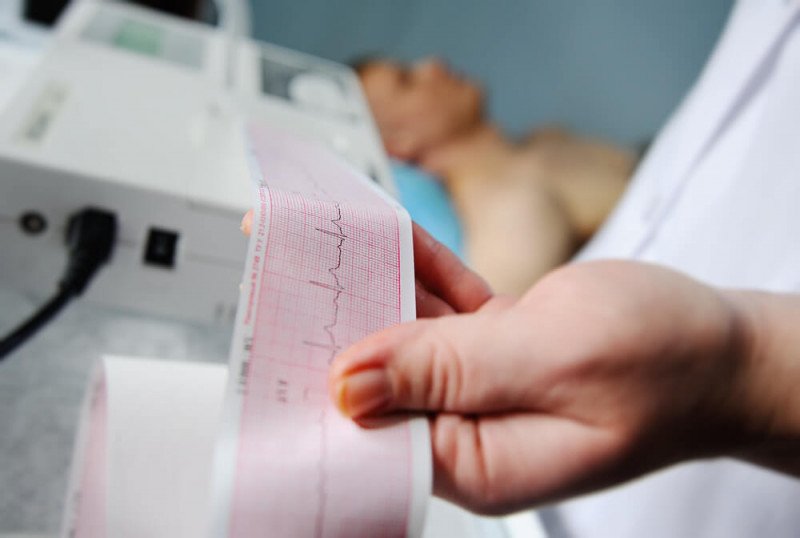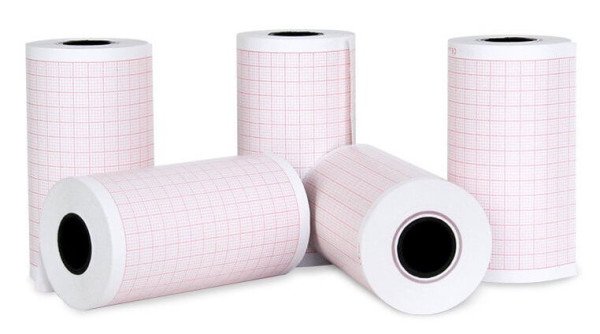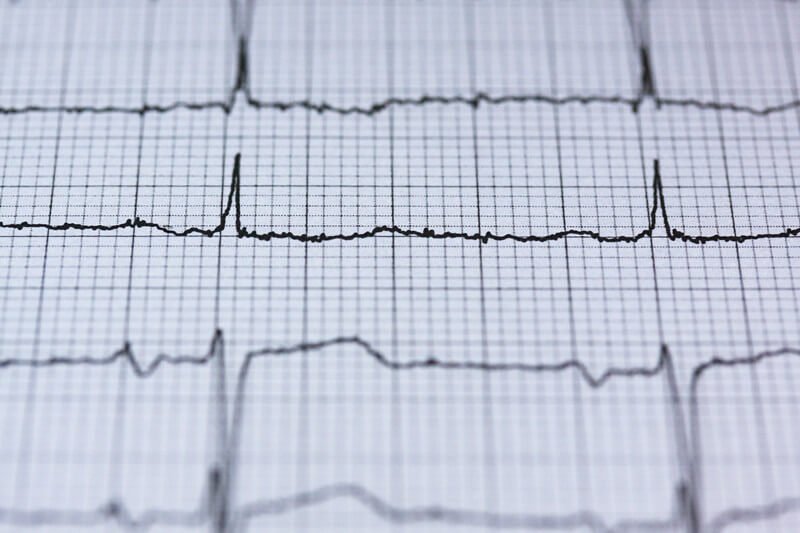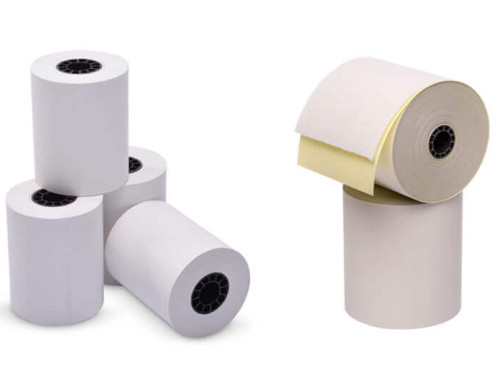In the world of medicine, precise and accurate measurements are essential. That’s why doctors and nurses rely on ECG paper to record the electrical activity of the heart. The electrocardiogram, or ECG, is a vital diagnostic tool that healthcare professionals use to assess heart function. While the technology behind the ECG has changed (and improved) considerably over the years, the basic principles remain the same.
This blog post will discuss everything you need about ECG paper, including its use, how it works, and where to buy it. We’ll also explain why quality matters when choosing ECG paper and other additional information when choosing suppliers. Let’s get started.
What Is An ECG?

An ECG, also known as an electrocardiogram, is a test that measures the electrical activity of your heartbeat. A normal heart produces a specific electrical impulse pattern that makes the heart muscle contract, and this electrical activity can be measured by electrodes placed on the skin surface.
An ECG provides important information about the structure and function of your heart. It can detect various heart conditions, including arrhythmias, heart attacks, and cardiomyopathies. An ECG monitors the effects of medications or medical procedures on the heart. It’s a safe and painless test that can provide valuable information about your heart’s health.
What Is ECG Paper?

ECG paper (also called ECG recording paper, medical heart test paper, cardiology paper or fetal monitoring paper) is a readout of your heart’s electrical activity on a paper. The paper is marked with small, regular square lines corresponding to specific time intervals. These lines help your doctor track and interpret your heart’s tiny electrical impulses constantly generated.
The paper is usually attached to an electrocardiograph machine, which amplifies and records these electrical signals. The device then displays them on a screen or printout for your doctor to review.
An ECG paper can provide valuable information about your heart’s health and function and help your doctor diagnose problems such as arrhythmias, heart attacks, and other cardiac conditions. In some cases, it may also monitor your heart’s response to treatment.
How to Read ECG Paper?

Source: rnceus.com/ekg/ekghowto.html
The ECG has three primary purposes: to determine the rate, rhythm, and abnormalities of the electrical impulses passing through the heart. The first step in reading an ECG strip is to look at the paper. The essential features to notice on the paper are the small boxes labeled with numbers and letters.
These correspond to different areas of the heart and will help you identify where the electrical impulses are coming from on the heart. Another essential feature to notice is the large lines running across the paper. These represent time, and each small box represents 0.04 seconds.
The ECG paper is covered with small squares representing a specific time interval. The number of squares per second can vary depending on the make and model of the ECG machine but typically ranges from 25 to 50. To read an ECG paper, start by finding the baseline, the flat line at the bottom of the tracing. The baseline represents the resting state of the heart, and all other waves and spikes are measured relative to this point.
Each large line represents 0.1 seconds, and each small line represents 0.02 seconds. By counting the number of small lines between two large lines, you can determine the rate at which the electrical impulses travel through the heart.
Take a look at the waveforms. They vary depending on what abnormality is present, but there are some general shapes you can look for. For example, a tall waveform indicates a strong electrical signal; in contrast, a flat waveform means a weak signal. Taking all of these factors into account, you should be able to read an ECG paper.
However, it is essential to note that ECG interpretation requires significant training and experience, so always consult a qualified healthcare professional before making any decisions about your health.
Why Use an ECG Paper Instead of Ordinary Paper?
While you could technically use any type of paper for this purpose, there are several reasons why ECG paper or medical recording paper is a better choice.
For one thing, ECG paper is made from thermal paper, which is coated with invisible chemical material that makes it more resistant to changes in temperature and humidity. It ensures that the recordings are more accurate, as they are less likely to be affected by environmental factors.
It is available in various sizes and formats to find the perfect one for your needs. The main advantage of using ECG paper is that it provides a clear and consistent record, which is essential when trying to diagnose a problem or track a patient’s progress over time. In addition, ECG paper is more durable than ordinary paper, so it will last longer and resist damage from moisture and light.
ECG paper is typically much more expansive than standard paper, which allows for more detailed recordings. Finally, this type of paper is often treated with a special enzyme that makes it easier to read when enlarged.
What Should I Look for in an ECG Paper?

ECG paper rolls Source: Panda Paper Roll
1. Size
The ECG paper size is a crucial factor in ensuring accurate and reliable interpretation of electrocardiogram recordings because it affects both the waveforms’ tracing and readability. The smaller the paper, the more difficult it is to read the tracing accurately. In addition, smaller paper sizes result in a lower tracing amplitude, making it more difficult to identify subtle changes in the waveform.
ECG paper comes in various sizes in the market, but it usually comes in “roll” or “Z-fold (pad)” formats. The ECG paper size will usually depend on the ECG machine’s brand and model and the country where the ECG is being performed, as well as the physician’s preference.
In general, though, some mainstream ECG paper sizes are primarily used in the market. Manufacturers like Panda Paper Roll can offer the following ECG paper sizes:
| 50mm x 20m Roll | 110mm x 30m Roll | 110mm x 100mm Z-fold |
| 80mm x 20m Roll | 210mm x 20m Roll | 112mm x 100mm Z-fold |
| 80mm x 30m Roll | 210mm x 30m Roll | 210mm x 140mm Z-fold |
| 110mm x 20m Roll | 216mm x 20m Roll | 210mm x 300mm Z-fold |
2. Quality
ECG paper is one of the most essential consumables in an ECG machine as it is the media on which the heart’s electrical activity is printed. Therefore, it must be of high quality to provide accurate and reliable waveform recordings. The main factor determining the quality of ECG paper is its weight or density.
This refers to the mass per unit area of the sheet and is usually expressed in grams per square meter (g/m2). Higher density papers are generally of better quality as they produce sharper and clearer terminal deflections.
In addition, they are less likely to fray or curl at the edges, which can lead to artifacts on the tracing. Another important factor to consider is the opacity of the paper, as this affects the visibility of any overlapping waveforms.
3. Compatibility with the Machine
Compatibility is one of the most important factors to consider when buying an ECG paper. After all, if the paper doesn’t work with your device, it will not do you much good.
There are a few different things to keep in mind regarding compatibility. First, you need to make sure that the paper is compatible with the brand and model of your ECG machine. While most papers will work with any device, there will always be exceptions. If you’re unsure whether a certain paper will work with your machine, it’s always best to follow the ECG machine’s manual or consult with the after-sale support service.
Here, we list some well-known ECG/EKG machine brands that are recognized in the global market:
- GE Healthcare
- Philips Healthcare
- Siemens Healthineers
- Schiller AG
- Burdick
- Fukuda
- Nihon Kohden
- Cardiac Science
- Mindray Medical
- Bionet
4. Price
Most people looking to buy an ECG paper will have a budget in mind. However, it’s important to remember that price is not the only factor when choosing a paper. While a lower-priced paper may save you money upfront, it may not be as high quality as a more expensive option.
This can result in inaccurate readings or even damage to your ECG machine. In contrast, a higher-priced paper may be more durable and accurate, ultimately saving you money in the long run. So when considering the price, balance it with other essential factors like quality and durability. Doing so can ensure you’re getting the best value for your money.
Summing-Up
Paper Panda Rolls has been supplying thousands of hospitals, medical professionals, and clinics worldwide for over twenty years, and we can provide premium ECG paper at affordable wholesale prices! If you’re looking for ECG paper in different sizes, don’t hesitate to contact our team for assistance.







hey what is the stability studies report of ecg paper? and how it is manufactured?
Does this Healthible Rolls ECG Paper (found at https://www.amazon.com/Machine-Millimeters-Meters-Thermal-Recording/dp/B08XK38SR1) compatible for use with Philips ECG Machines
Very informative article. I have learned a lot about ECG paper. Thanks for sharing.